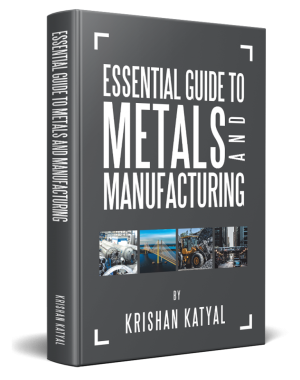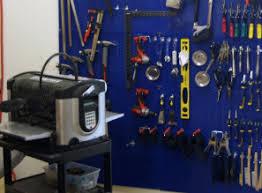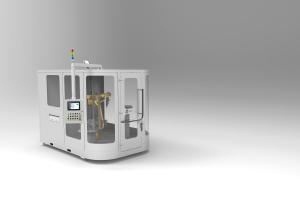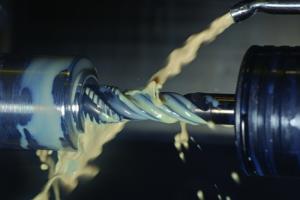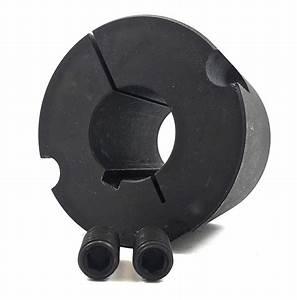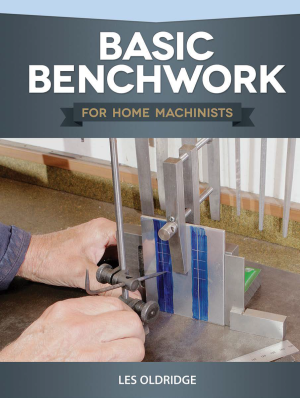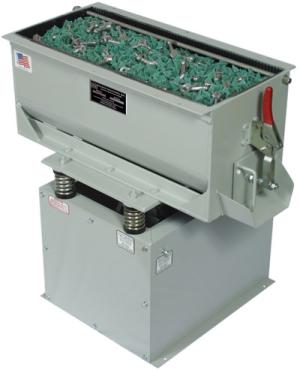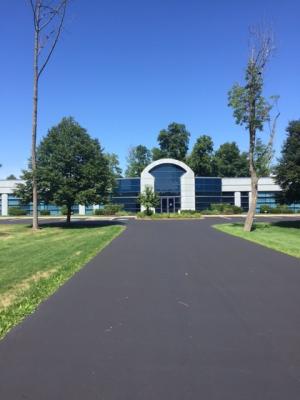Blogs for all/
After a bit of a hiatus, I received a new book about metalworking, “Essential Guide to Metals and Manufacturing” by Krishan Katyal. The author is a mechanical engineer who has worked for four decades designing and manufacturing machine tools, consumer appliances, diesel-electric locomotives and heavy concrete construction products for Chicago area companies.
For those who want to enhance a CNC by adding capabilities, Chris Robson, applications engineer for Minneapolis-headquartered machine tool dealer Concept Machine Tool – (Delafield) Wisconsin, gave a presentation titled “What Else is Inside this Box? Open Architecture CNC.” His seminar took place Oct. 3 at the 15th biennial Wisconsin Manufacturing & Technology Show in the Exhibition Center at the Wisconsin State Fair Park, Milwaukee.
Imagine a beam of light traveling unimpeded for 13.5 billion light years, only to get deflected and distorted just before being captured by a telescope. That is something the builders of the Giant Magellan Telescope are working hard to avoid.
There’s a Sands Casino where the Bethlehem Steel Corp. once stood. The casino was completed in 2009, just 8 years after the 100-year-old steel company filed bankruptcy. Ironically, the biggest obstacle facing the casino’s developer was a shortage of structural steel. Even more ironically, the developer ended up buying it from Nucor Corp., the onetime “minimill” competitor that Bethlehem executives scoffed at decades earlier for the startup’s embrace of electric arc furnace technology.
I admit to some bias against school. From about fifth grade on, our educational system and I were rarely on speaking terms. Think oil and water rather than peas and carrots. Needless to say, I left at my earliest opportunity. Aside from that thing with my daughter pulling the fire alarm, my kids were far better students. So when it came time for them to make the big decisions, I kept my opinion to myself and did what most parents do these days: Encourage them to get their college degrees.
I’m not a morning person. If it were up to me, all alarm clocks on Earth would be rounded up and smashed with a giant hammer, their electronic corpses left to rot in a landfill far, far away from my home in Tucson, Arizona. I’m not sure what people on other planets do about the whole alarm clock situation, but I assume they are more advanced than humans and therefore late sleepers like me. Unless my dad’s predictions about the looming extraterrestrial invasion are accurate, however, we’ll never know.
I recently read an article discussing how the Environmental Protection Agency will now allow asbestos-containing products to be manufactured and sold in the United States on “a case-by-case” basis, apparently reversing parts of the organization’s 1963 Clean Air Act and the 1989 Asbestos Ban and Phase-Out Rule. While that’s good news for the mesothelioma attorneys you see every night on TV, it’s bad news for American workers, a number of whom will soon be tasked with mining and processing the dangerous material once known as “the magic mineral” for its heat, electrical and chemical resistance.
As manufacturers continue to be challenged by a shortage of skilled workers and the need to boost productivity, automation remains a topic of significant interest. That was certainly the case at the Wisconsin Manufacturing & Technology Show. The biennial trade show took place Oct. 8-10 at the Exposition Center at Wisconsin State Fair Park, West Allis, Wisconsin.
I’m one of those annoying people who stays current on technology. I store my stuff in the cloud, patch my software religiously and have my fifth smartphone in as many years. Despite my geeky tendencies, however, I’m apprehensive about the effect that Industry 4.0 and the industrial internet of things will have on … well, the industry. Call it smart manufacturing if you like, but many shop owners and managers—especially those who grew up with black-and-white TVs and rotary phones—might secretly call it scary manufacturing instead.
For our February issue’s Industry Briefs department, I’m writing an article about the Deburring Application Laboratory at Matrix Design LLC. The company designs, builds and installs robotic automation systems for deburring parts, as well as machine tending and material handling.
Rollomatic Inc. hosted an open house Nov. 7-9 at its headquarters in Mundelein, Ill. In addition to displaying the latest Rollomatic and Strausak grinding machines, as well as a Platit tool coating machine, the event offered attendees an opportunity see a demonstration of Rollomatic’s software for Industry 4.0.
I recently spoke with Afzaal Mir, founder and owner of toolmaker FSC Cutting Tools Technology LLC, Greenville, S.C., about his business and life.
As discussed in the current issue of Cutting Tool Engineering magazine in the feature article “Specialization on tap,” material-specific taps continue to evolve. Sources anticipate increasing specialization of the materials used for taps across industries.
Despite my sore feet and the cold, overpriced sandwiches, I love the International Manufacturing Technology Show. The whine of the spindles, the smell of the coolant, the machine gun sound of the chips hitting the glass—these might not be the memories the exhibitors want me to carry home, but they stick with me the longest.
Remember that before there was high-tech there was low-tech. And there still is low-tech! For example, boring and cutting a keyway in a tapered bushing is one of the most often performed tasks a maintenance machinist will perform.
Although the title of a book I received a digital review copy of is “Basic Benchwork for Home Machinists,” it contains information that even metalworking professionals might implement on the shop floor or at least enjoy reading.
When mass finishing—finishing many parts simultaneously—in a vibratory finishing system, the tendency is to use ceramic or plastic preformed cutting media, said Steven Schneider, technical sales manager at surface finishing company Kramer Industries Inc., Piscataway, N.J. Ceramic tumbling media are made with abrasive filler, much like a grinding wheel. For plastic tumbling media, plastic is mixed with abrasive filler and cast to shape. Ceramic media use aluminum oxide as filler, and plastic media use quartz or silica for cleaner results.
In connection with the article I’m writing about metalworking fluid filtration equipment for our March issue, I spoke with Irvin Kaage, president of Transor Filter USA, Elk Grove Village, Ill. The company provides the One Micron Filtration system, which removes particles larger than 1µm from oil, primarily for grinding.
The week after CemeCon Inc. held a ribbon-cutting Jan. 17 to officially open its new 15,000-sq.-ft. headquarters and CVD diamond coating facility, I spoke with Gary Lake, company president, to discuss the expansion and developments in cutting tool coating technology. The opening marks the fourth expansion of production capabilities since the company, which is a subsidiary of Wuerselen, Germany-based CemeCon AG, was founded in 1998 and the third increase in capacity for the CVD diamond process since 2014.
Customers of Cobra Carbide asked the company for made-in-America cutting tools and the West Coast manufacturer of drills, endmills, reamers and burs met their request. Until late 2016, Cobra sold tools in the U.S. that were produced either at its Riverside, Calif., facility or a plant it owned in India, which the company recently sold. It now produces all its tools in Riverside. “As more and more customers asked for made-in-the-U.S. product, we changed accordingly,” said Cobra Carbide’s CEO, Rakesh Aghi.

